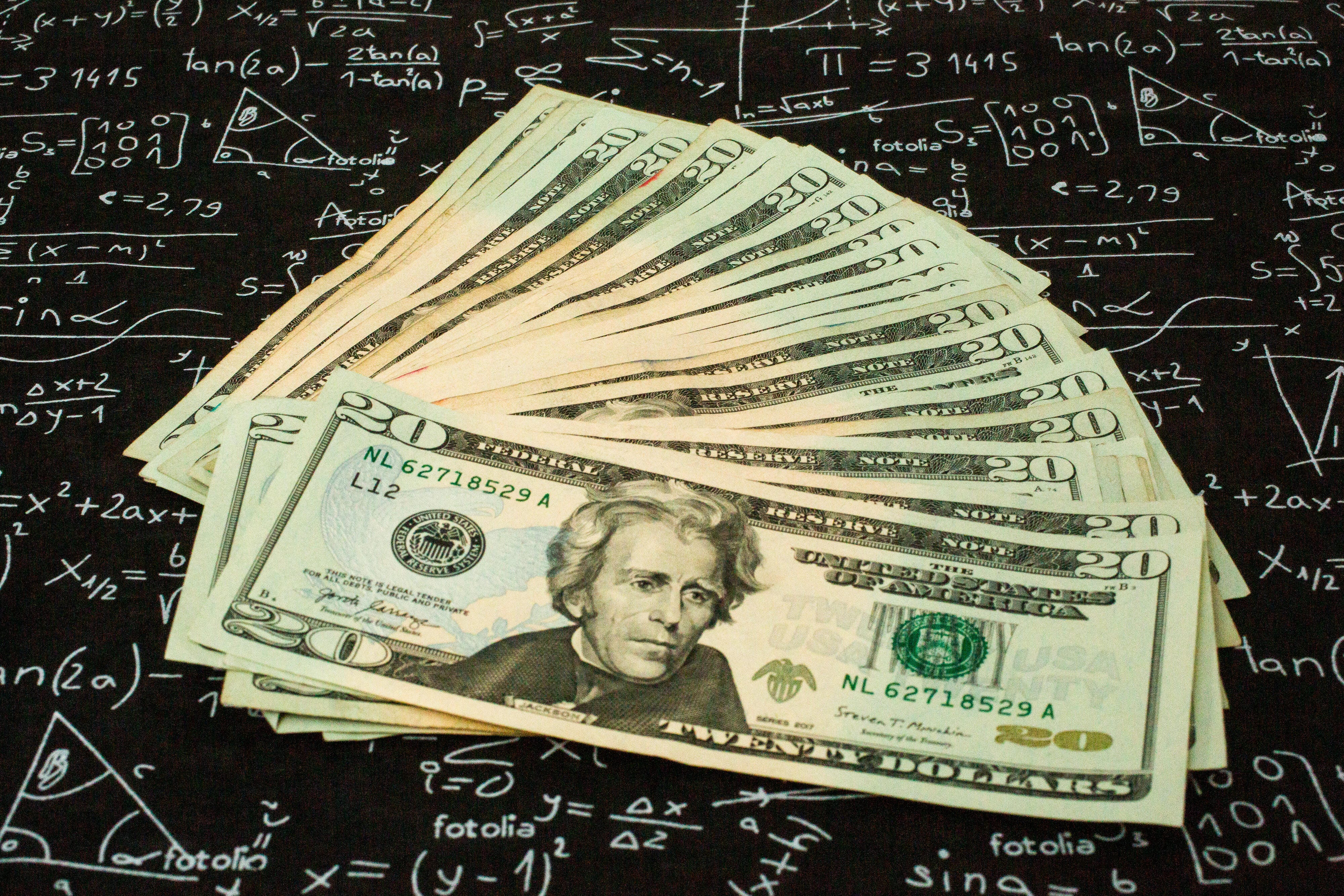
The status update on the IRS making $1,400 stimulus payments -- and what you need to know about the check timeline and plus-up payments.
Sarah Tew/CNETIf you got your stimulus check, did the IRS send the right amount or do you need to be on the lookout for a plus-up payment to arrive? (And if so, when would it come?) If you're one of the million of people still waiting for your $1,400 maximum check per person, will your money come soon, and what could be causing the delay?
We'll go over big stimulus check timeline and delivery issues like:
Keep reading for details. In the meantime, here's the current discussion on a fourth stimulus check and details on child tax credit payments, including how much CTC money you can get and who's an eligible dependent. And here are five ways to save on medical expenses with the stimulus bill. This story was recently updated.
What's an IRS plus-up payment and why would you get one?
The IRS began making supplemental payments this week to those it owes more money based on their latest tax filing. If the IRS uses your 2019 taxes (and AGI) to calculate your third stimulus check, but finds it underpaid you after processing your 2020 taxes, you're due an adjustment called a plus-up payment. If you got your stimulus payment via direct deposit, that's how you'll get your plus-up money, too. If the IRS doesn't have your details on file, you may receive a paper check instead.
Plus-up payments will continue on a weekly basis as the IRS processes 2020 tax forms and reevaluates checks. The batch going out this week includes 1 million plus-up payments for more than $2 million.
Stimulus check payments so far
| Direct deposit | Paper checks | EIP Card | Direct Express Card | Plus-up | |
|---|---|---|---|---|---|
| First payment batch -- March 17 | 90 million ($242 billion) | 150,000 ($442 million) | Not released | Not released | Not released |
| Second payment batch -- March 24 | 17 million ($38 billion) | 15 million ($34 billion) | 5 million ($11 billion) | Not released | Not released |
| Third payment batch, including Social Security -- April 3 | 2 million ($5 billion) | 2 million ($5 billion) | Not disclosed | Up to 30 million to come | Not released |
| Fourth payment batch, including "plus-up" money -- April 7 | 24 million ($33 billion) | 1 million ($3 billion) | Not disclosed | 3.1 million | 1 million ($2 million) |
Here's how the IRS will pay out your stimulus money
If you're getting your new stimulus check delivered now (and not a plus-up), expect to receive it in the mail (how to track it) as a paper check or EIP debit card. However, if you're an SSI or SSDI recipient who has a Direct Express benefits card, you should get an electronic transfer. Otherwise, look for a check in the mail, but not an EIP card, according to the SSA. (More details below.)
Note that it could take days between the date the IRS or Treasury processes your stimulus money and when you receive it, especially if your check is arriving through the mail. If you moved recently, you need to tell the IRS and USPS.
What would divide or delay your stimulus check delivery
Here's more information on problems you might encounter with your stimulus check.
Track your payment status online and in the mail
The IRS updates its Get My Payment tracker tool for stimulus checks daily. This online app shows the status of your payment, including when a check is scheduled for delivery. The IRS portal also flags if there's a problem with your payment that you may need to address, but it doesn't tell you the amount you'll receive. You'll see your payment status in the tracker for SSI and SSDI beneficiaries. Those who receive VA benefits will be able to check the status of their payments the weekend of April 10 and 11. You can use a free tool from the USPS to track your mailed stimulus payment.
Stimulus check delivery start and end dates
| Stimulus bill signed into law | March 11 |
|---|---|
| First direct deposits made | March 12 (provisional), March 17 (official) |
| First paper checks sent | Week of March 15 |
| First EIP cards sent | Week of March 22 |
| Last day to get direct deposit | March 24, unless you receive a "plus-up" adjustment for 2020 taxes |
| First Social Security, SSI, SSDI payment sent | Weekend of April 3, most arriving April 7 |
| First plus-up payments | Weekend of April 3 |
| VA benefits for veteran nonfilers | April 14 |
| IRS deadline to finish sending checks | Dec. 31, 2021 (mandated by the bill) |
| Last date to receive a check | January 2022 (if mailed checks sent late December) |
| Final claims for missing stimulus money | 2021 tax season likely (in 2022) |
What to do if you're missing any stimulus money from your third check
There are several reasons the IRS may owe you stimulus money after it sends out the third round of checks.
For example, the agency may have processed your 2019 tax return before it received 2020 tax forms and you're entitled to a bigger payment. If this is your situation, the IRS said it will automatically evaluate if you qualify for more money after it receives your 2020 tax return. It will then send you a supplemental payment for the difference between what you originally received and the amount you now qualify for. You don't need to take any action to receive this supplemental payment, according to the IRS.
If you had a baby or added a dependent in 2020, the IRS said it will also automatically send you a supplement payment once it receives your taxes this year.
But what if a clerical error accidentally left out a new dependent? Or perhaps your payment never arrived or was accidentally garnished? The IRS may provide a way to file for missing stimulus money before the Dec. 31 deadline. If not, you might have to wait a year to claim it, when you file your 2021 taxes in 2022 (even if you're a nonfiler who isn't typically required to file taxes).

If you don't get all your stimulus check money right away, you may need to address the issue down the road.
Sarah Tew/CNETHow you should -- and shouldn't -- report a payment problem
The IRS doesn't want you to call if you have any issue with the delivery or amount of your stimulus check. So what to do instead? Our guide walks you through how to report stimulus check problems, including checks that never arrive (try filing a payment trace), direct deposit payments that go to the wrong account and other issues.
Social Security, SSDI, SSI, veterans, more: What to know about your payment
After a weeks-long holdup, the IRS is now making payments for SSDI and SSI recipients and retired railroad workers, many of whom automatically qualify for the third check. The first payments started going out April 3, with the majority of payments made electronically -- either through direct deposit or to existing Direct Express cards (PDF) -- by April 7, according to the IRS.
For those who receive veterans benefits, the IRS said it's reviewing data for Veterans Affairs benefit recipients and expects to start making payments by April 14. VA beneficiary payment information will be available in the Get My Payment tool this weekend, the IRS said.
Note that you'll most likely get the electronic payment transfer if this is how you normally receive benefits, and if you didn't file taxes in 2019 or 2020. But some in this subset of nonfilers could receive an automatic payment sooner if they got a previous check by using the IRS' Non-Filers tool, which is now closed. The SSA says this group will not receive an EIP debit card. Here's our complete guide to stimulus checks for people receiving Social Security benefits.

Millions may wind up getting a smaller check than they're owed, depending on their 2020 taxes.
Sarah Tew/CNETWhat your 2020 tax return has to do with it
Taxes are now due May 17. So how will the IRS figure out how much it owes you? It will calculate your total (you can also do that here) based on the most recent tax filing it's processed at the time it's ready to tabulate the amount of your stimulus check.
If you filed your 2020 taxes early and you know your tax return was already processed, your total will likely be based on your 2020 adjusted gross income, not on your 2019 AGI. That presents complications if the difference between the two years disqualifies you from getting a third stimulus check.
On the flip side, if the IRS uses your 2019 taxes and you're owed more money based on your 2020 AGI and dependents, you'll need to claim the difference at a later date. Note that if you filed your 2020 taxes after you got your stimulus payment, this IRS is now sending the catch-up payments now. (Learn more about some of the stimulus check exceptions and catches here.)
Stimulus money could still appear through the end of 2021
Although the IRS and Treasury are sending stimulus checks now, the agencies have until Dec. 31 to complete distributing the third payments. That's good news in the sense they aren't facing a compressed deadline to send out all the checks, as they did for the second stimulus check in December, which only gave them a 17-day window to get the payments out.
On the other hand, the nearly nine-month delivery window also means some people may find themselves waiting for their payment, for a variety of reasons. We'll have to wait and see how the IRS deals with any fringe issues that arise, such as the need to claim missing money.
Additional details for certain payment groups
Stimulus checks aren't necessarily a one-size-fits-all situation. Here are additional guides for:
And here's everything you need to know about the third stimulus check, how to calculate your stimulus total and every way the stimulus bill can bring you more money.
from CNET https://ift.tt/39VWOAj
via IFTTT




No comments:
Post a Comment